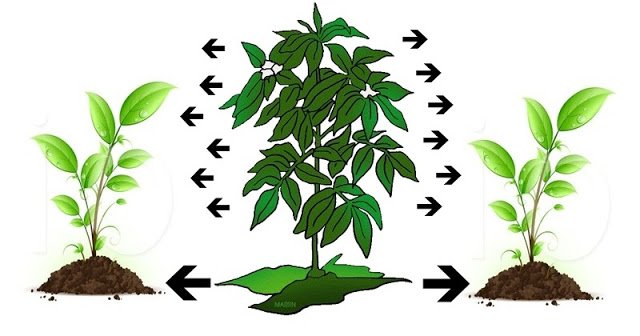Have you ever heard of allelopathy? If not, don’t worry – many people are unfamiliar with this biological phenomena. Discovering allelopathy in nature can be fascinating, beneficial and even critical for understanding how certain plants interact or compete with each other. In this blog post, we will explore what exactly allelopathy is, explain which plants elicit these responses, provide an overview of the possible effects it could have on different species, and finally discuss five potential advantages that biologists have found as a result of studying this intricate system.
What is Allelopathy?
Most chemicals that stop growth are made by plants as byproducts and released into the soil through the roots or leaf wash. The suppression of a plant’s growth through the release of chemicals by a higher plant is known as allelopathy. Thus, allelopathy (allelon = each other + pathy = suffering) refers to the chemical control of plant distribution.
Allelopathic interactions are an essential factor in determining species distribution and abundance within plant communities and are also thought to be important in the success of many invasive plants. Allelopathic chemicals can be present in any part of the plant.
They can be found in leaves, flowers, roots, fruits, or stems. They can also be found in the surrounding soil. Target species are affected by these toxins in many different ways. The toxic chemicals may inhibit shoot/root growth. They may inhibit nutrient uptake, or they may attack a naturally occurring symbiotic relationship, thereby destroying the plant’s usable source of a nutrient.
Allelopathy Effects/Environmental Impact
Allelopathy is a form of chemical competition. The allelopathic plant is competing through “interference” chemicals. Competition by definition takes one of two forms exploitation or interference. When organisms compete with one another, they create the potential for resource limitations and possible extinction. Allelopathic plants prevent other plants from using the available resources and thus influence the evolution and distribution of different species. One might say that allelopathic plants control the environments in which they live.
Allelopathic plants
Though a considerable number of plants in nature show allelopathic behavior. Allelopathy is not a common phenomenon for all plant species. Some plants and trees that are well known as allelopathic are Black Walnut (Juglans nigra), Ailanthus or Tree Of Heaven (Ailanthus altissima), Fragrant Sumac (Rhus aromaticus), Rice (Oryza sativa), Pea (Pisum sativum), sorghum, etc.
Black walnut is an expert allelopathic plant that contains allelopathic properties within its leaves, buds, roots, and nut hulls. It is also known to secrete a substance into the soil called juglone, a respiratory inhibitor to some plants. Though most of the allelopathic plants store their chemical weapon, allelochemicals, within their leaves, allelopathic properties can be stored within several organs of the allelopathic plants. The allelopathic characters can be found in the roots, barks, flowers, fruits, seeds, pollen, foliage, etc., of the allelopathic plants.
Advantages of Allelopathy
Allelopathic plants can be introduced in agroecosystems to get some advantages from that
1. Allelopathy can be used for beneficial purposes through using allelochemicals as natural herbicides or pesticides. Various allelochemicals classes, including alkaloids, flavonoids, cyanogenic compounds, cinnamic acid derivatives, benzoxazines, ethylene, and some other seed germination stimulants, can be isolated from various families of terrestrial and aquatic plants. These allelochemicals are readily or potentially phytotoxic to many unnecessary plants.
2. Using allelopathic plants in companion cropping may bring a great advantage to an agroecosystem. A selectively allelopathic plant can be used as a companion plant with a particular crop plant. The selectively allelopathic plant will suppress certain weeds and will not disturb the growth of the main crop. The introduction of several crop species such as corn, lupin, oats, beets, wheat, peas, millet, barley, rye, etc., in companion cropping has been proved effective in suppressing several weeds.
3. Some parasitic weeds produce seeds that germinate in response to chemical compounds released from their hosts. For instance, Striga, a parasitic plant to cereals, germinates in response to pbenzoquinone compound released from its natural host sorghum. Ethylene is also effective in stimulating Stirga to germinate. Thus, ethylene can be applied to make Stirga germinate in the absence of a host. Using allelochemicals to stimulate the suicidal germination of weed seeds reduces the number of dormant seeds in the soil.
4. The allelopathic characteristics of wild plants can be transferred into commercial crops to boost up their allelopathic traits for weed suppression.
5. Selectively toxic plant residues can be appropriately managed to control weeds efficiently. Using allelopathic crops in crop rotation, covering cropping with smother crops, using phytotoxic mulches, etc., can be examples of some good allelopathic residue management practices.
